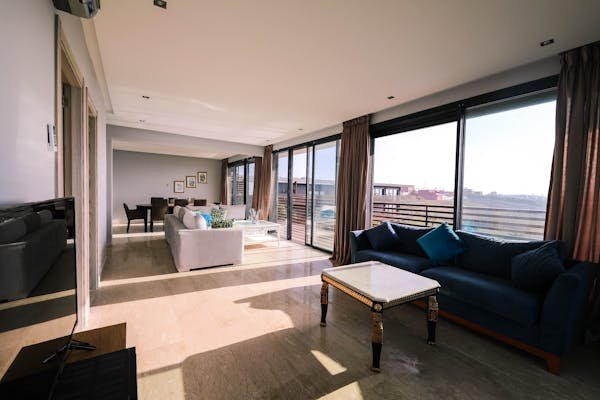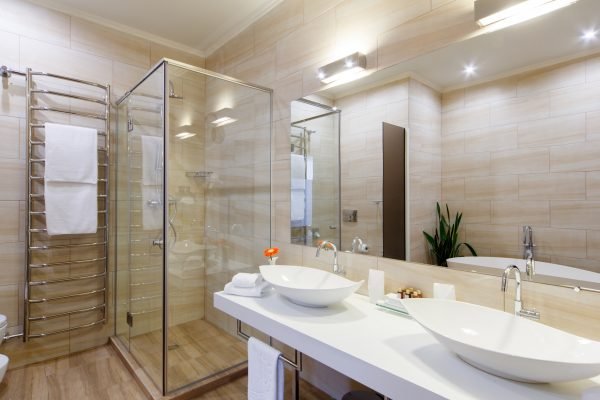Heating, ventilation, and air conditioning (HVAC) systems are crucial for maintaining a comfortable indoor environment in homes and businesses. However, even the most seasoned property owners can fall prey to common mistakes that may compromise the efficiency and longevity of these systems. Recognizing and avoiding these errors can save you time and money and ensure your system operates at its best.
Read on to learn some common HVAC mistakes you can make.
Neglecting Regular Maintenance
One of the most frequent oversights is the failure to schedule regular maintenance checks. An HVAC system requires periodic inspections to ensure all components function correctly. During these checks, a technician can identify and rectify minor issues before they escalate into major problems, potentially leading to costly repairs or complete system replacements.
Therefore, if you want to ensure proper maintenance, working with companies like All Air Heating and Cooling would be an excellent idea. These companies specialize in providing comprehensive HVAC services that extend the life of your equipment and enhance its efficiency.
Ignoring Filter Replacements
Regular filter maintenance is essential for optimal HVAC performance. The filter’s primary role is to capture dust, pollen, and other airborne contaminants, preventing them from circulating through your home and accumulating in the system’s workings. When filters become clogged, the system must exert more effort to push air through, decreasing efficiency and increasing wear on components. This additional strain raises energy costs and precipitates system failures, necessitating premature repairs or replacement.
Hence, routine checks and timely filter replacements, aligned with manufacturer recommendations and environmental conditions, are critical for maintaining system health and air quality.
Improper Thermostat Settings
Many homeowners misunderstand thermostat operations, thinking extreme temperature settings will heat or cool spaces more rapidly. However, HVAC systems work at constant outputs, making such practices inefficient and costly. Instead, programmable thermostats can significantly enhance system efficiency. These devices adjust the indoor temperature according to programmed settings for different times of the day or week, accommodating when the house is empty or during sleep hours. This can help minimize the operational load on the HVAC system—thereby extending its lifespan—and reduce unnecessary energy expenditure, leading to noticeable reductions in utility bills.
Choosing Incorrect System Size
The size of an HVAC system is pivotal in determining its efficiency and effectiveness. An oversized unit cycles on and off too frequently, which can cause excessive wear and tear and lead to a humid indoor environment due to inadequate dehumidification during short cycles.
Conversely, an undersized system runs continuously, struggling to meet the space’s heating or cooling demands, which increases operational costs and reduces overall comfort. Proper sizing involves detailed calculations, considering factors such as the building’s layout, insulation levels, window size and orientation, and local climate conditions. Engaging a qualified professional to perform these assessments ensures the selection of an appropriately sized system, optimizing comfort and efficiency.
Overlooking Vents and Registers
Ensuring that vents and registers are not obstructed is crucial for maintaining efficient airflow in HVAC systems. Objects like furniture, curtains, or rugs can block these air passages, significantly impeding air distribution and compromising the system’s ability to regulate indoor temperatures effectively. This blockage forces the HVAC system to exert extra effort, increasing energy consumption and potentially causing wear and tear that shortens the system’s lifespan.
Regularly inspecting and keeping vents and registers clear of obstructions promotes better air circulation, enhancing the overall efficiency and effectiveness of the heating and cooling processes.
Ignoring Early Signs of Trouble
Attentiveness to the initial symptoms of HVAC issues, such as strange noises, unusual odors, or inconsistent airflow, is critical. These signs often indicate underlying problems that, if unaddressed, could evolve into major system malfunctions requiring costly repairs. Early detection and intervention can prevent these minor issues from escalating, safeguarding the system’s functionality and longevity.
Using Outdated Equipment
With advancements in technology, HVAC systems’ efficiency has significantly improved. Older systems tend to consume more energy and are less effective at regulating temperature and air quality than newer models. Consequently, operating an outdated system can lead to higher energy bills and frequent breakdowns.
Upgrading to a modern, energy-efficient HVAC system reduces energy consumption and enhances indoor comfort and air quality. Such upgrades pay off by lowering operational costs and minimizing the environmental impact of heating and cooling technologies.
Failing to Consider Humidity Levels
Maintaining optimal humidity levels is a vital function of HVAC systems, impacting comfort and health. High humidity levels can make indoor environments feel warmer than actual temperatures suggest, leading to unnecessary air conditioner use and increased energy expenditures.
Conversely, too low humidity can cause discomfort, dry skin, and respiratory problems. Integrating a dehumidifier with the HVAC system can regulate these levels, ensuring comfortable and healthy indoor conditions. Proper humidity control improves comfort and contributes to more efficient HVAC operation and reduced energy costs.
Conclusion
Avoiding these common HVAC mistakes can significantly improve comfort, system performance, and cost savings. Regular maintenance, proper equipment sizing, and timely upgrades are essential for getting the most out of your HVAC system. Remember, professional advice and services from experts are invaluable in maintaining an efficient and durable HVAC system.











